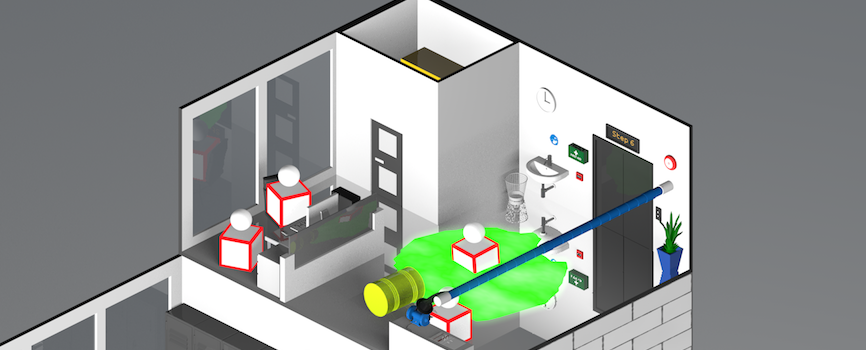6 trends set to drive the food and drinks industry in 2021
Posted 4 years ago
It goes without saying that COVID-19 has changed the face of many industries and unfortunately hospitality has been hit particularly hard. We caught up with a leading catering and kitchen equipment supplier, Alliance Online, to get their thoughts on key food and drink trends set to dominate the industry in 2021.

2020 was a year like no other, and it brought some surprising trends to the food and drinks industry. Throughout 2021, it’s likely these trends will continue, with consumers focusing on health, convenience, and the environment more than ever before.
Below, we’ll be going through six of the key trends we’re expecting to see dominate the food and beverage sector this year.
1) Consumers will be more health conscious
It’s no surprise more people were focusing on their health in 2020. Consumers have recognised the importance of feeding their body to boost their immune systems, and the industry will continue to see a rise in demand for health-conscious food and drinks coming to the market.
Nutrient-dense products aimed at improving health and wellness will see a boom this year, along with products designed to boost mental function and mood. You can also expect to see much more pre- and probiotic drink options on our supermarket shelves as consumers seek to look after their gut health and immune system.
This rise in a health-conscious market will also see more brands opting for natural ingredients, while talking more openly about their eco-credentials to attract more environmental customers.
2) We’ll see DNA-driven personalised nutrition
Personalised nutrition has been on our radar for a few years now but, in 2021, it’s had a bit of an update and is set to get a little more mainstream. New technologies can now curate meal suggestions based on an individual’s DNA, height, and weight to offer them a more personalised and nutritional diet.
Tests can be conducted right at home using a convenient postal testing kit, and users can be sent a customised nutrition plan straight to their phone. The data will include in-depth information on various parts of the user’s diet, including nutritional needs, food sensitivities, and metabolic imbalances. This will allow people to tailor their meals around their genetic make-up and live a healthier life overall.
For information on catering to different dietary requirements, take a look at our food allergy awareness training.
3) There’ll be a great focus on sustainability
Sustainability has been an important factor in the food and drink industry for many years but, this year, consumers are more focused on their health and the environment than ever before. This means we’re likely to see a lot more plant-based options and meat-free alternatives for popular food products. As a business, it might be worth researching plant-based replacements to meat and dairy, so you can adapt your services to suit the growing demand.
It’s also possible we’ll see many more options available for different price ranges, such as supermarkets bringing out their own varieties of plant-based products.
Keep an eye out for innovations in taste and texture, too, as food scientists try to recreate a more authentic meat and dairy experience in plant-based foods.
“The rise of sustainability in the food and drink sector also means more consumers want to know exactly where their food is coming from. It’s likely more businesses will be buying from local suppliers, especially those who follow sustainable food production methods such as regenerative farming. This means you’ll see more brands showing off their sustainability efforts and lower carbon footprint to appeal to a more eco-conscious customer.”
– Mike Hardman, Alliance Online
2021 will also have a bigger focus on recycling as more companies find ways to make their packaging more eco-friendly. We expect to see more information on labels giving tips on how to recycle packaging, too.
4) Online shopping is here to stay
In recent years, technologies like online grocery shopping and takeaway apps have revolutionised the way people shop, cook, and eat. Consumers have the option to order anything they want at their fingertips.
In the UK alone, the monthly value of internet food sales skyrocketed at the beginning of the first lockdown in March of 2020, as consumers turned to technology to carry out their usual food shops in a safe and convenient way (Statista).
This rise is partly down to new consumer groups discovering the magic of online shopping. And, as there’s no way to say how this year will play out, it’s looking like the popularity of these apps is here to stay.
For hospitality businesses and retailers, an online presence is key, and companies should be investing in innovative ways to use the internet to keep customers coming. Whether it’s by joining takeaway apps, making your website more user-friendly, or spending more time on your digital marketing, an online presence is as important as ever.
5) The demand for recipe boxes will continue
2020 saw a rise in demand for recipe boxes and meal kits as consumers had a more vested interest in cooking from scratch and trying out new dishes and cuisines.
This year, we expect to see this trend continue, with many local independent restaurants already creating their own recipe boxes to entice their customers who can’t dine inside. It’s entirely possible we’ll also see meal kit companies teaming up with restaurant chains to allow consumers to recreate their favourite dishes right at home.
6) Proof of good safety and hygiene practices will be more important than ever
The Coronavirus pandemic has placed more pressure on food and beverage businesses to follow best practice when it comes to safety and hygiene, and anyone working in food or beverage production, preparation, or sale must be aware of their responsibilities.
52% of respondents to a survey carried out by the Food Standards Agency said that they check on an establishment’s hygiene ratings before purchasing food.
One of the easiest ways to bring staff up to speed with their responsibilities is through Food Hygiene Training. Make sure you choose a provider that is approved, reputable and one that can give you a demo or trial of the training so that you can see it’s quality beforehand. Upon completing food hygiene training you can share certificates within a restaurant/workplace or share them online to demonstrate compliance.
To conclude…
In 2021, many of the food and drinks trends we saw emerge in 2020 will continue to grow. Consumers will be much more focused on their health, the environment, and convenience than ever before.
Over the last year, many businesses had to adapt to keep up with new trends and a new way of living. If you’re looking to refresh your knowledge or train your staff for a new approach to working, just take a look at our selection of food hygiene courses, including online Food Hygiene Level 1 training, Food Hygiene Level 2 and Food Hygiene Level 3 training.

Related articles



Opt-in to our newsletter
Receive industry news & offers